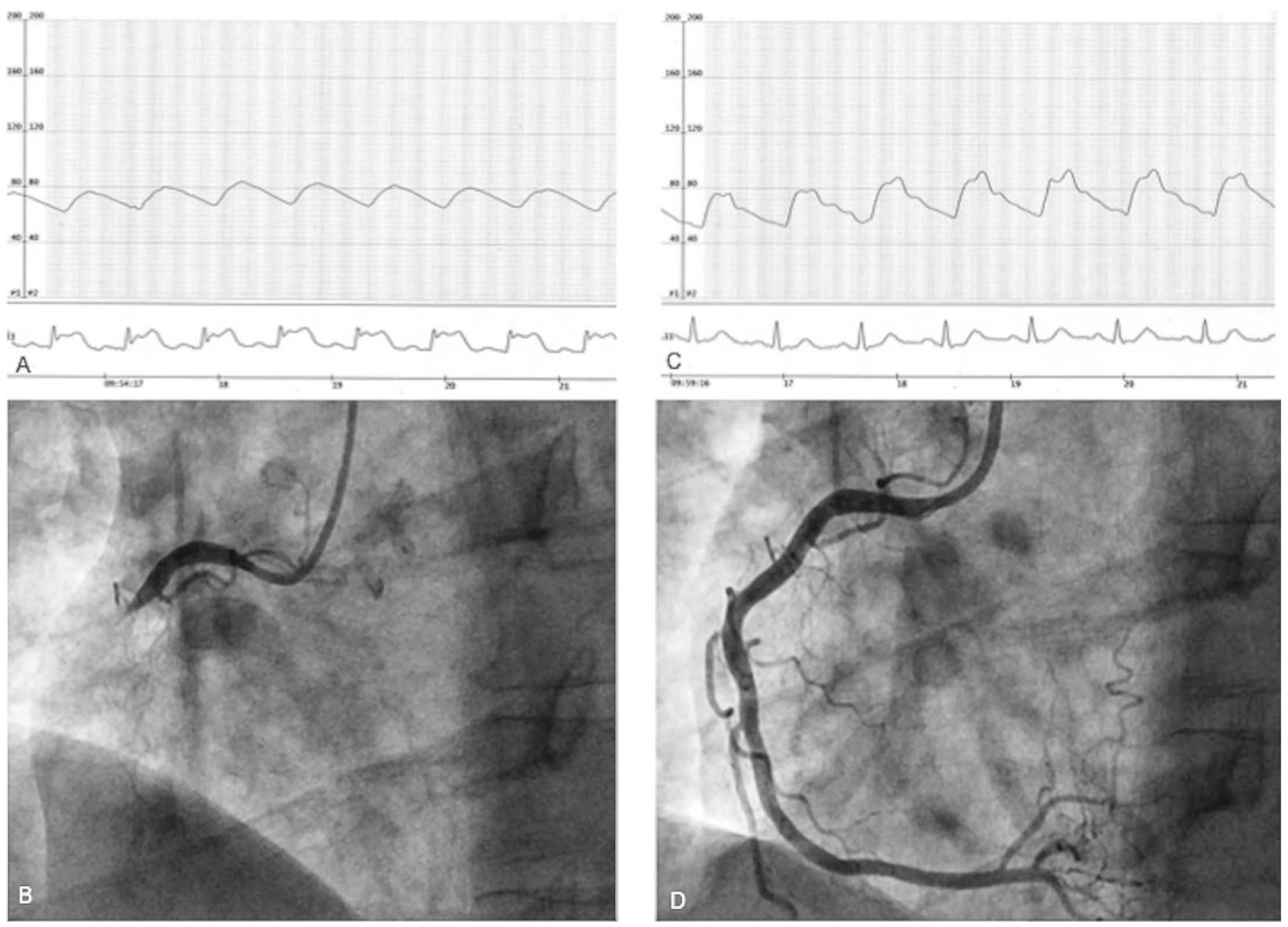A 50-year-old man, hypertensive and an active smoker, had for many years been complaining of typical chest pain, which occurred most often upon wakening in the morning. Recently prescribed sublingual nitrate relieved the chest pain. Coronary angiography was performed at 9:00 a.m. via a right transradial approach and with 5 Fr diagnostic catheters (Judkins left 3.5 and Judkins right 4.0). At the end of straightforward left coronary injections, which did not show significant coronary stenosis, he experienced his usual intense chest pain with major ST-segment elevation on the monitor (
Figure 1A) and subsequent transient complete atrioventricular block. Prompt injection of the right coronary artery (RCA) showed a proximal occlusion (
Figure 1B). After sublingual nitrate administration, chest pain progressively disappeared, the ECG normalised (
Figure 1C) and the RCA was again open without any significant stenosis (
Figure 1D). A daily calcium antagonist was prescribed with sublingual nitrate as needed. Smoking cessation was highly recommended. At the 18-month follow-up the patient was no longer a smoker and still free of cardiac symptoms under chronic medication.
This case is a unique “live” demonstration of a severe coronary spasm with complete RCA occlusion in a patient suffering from variant angina, also named Prinzmetal angina, which is a clinical entity characterised by transient reversible ST-segment changes in the electrocardiogram and recurrent episodes of angina, mostly between midnight and early morning. The prevalence is greatest in Japan. The chest pain can be severe and usually occurs spontaneously at rest or during normal activity, but is not reproduced by exercise. In addition to angina, patients may suffer from syncope secondary to atrioventricular block, cardiac asystole or ventricular tachyarrhythmia. Variant angina is a difficult diagnosis. A periepisode electrocardiogram is of great help, but often difficult to obtain and live spasm during coronary angiography – not induced by ostial catheter manipulations – is unique.




